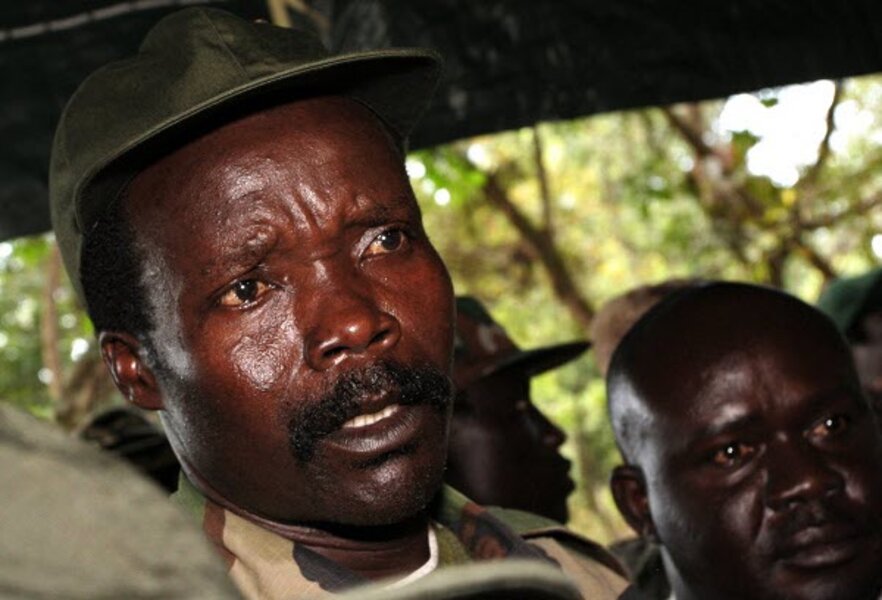Invisible Children causes stir online, seeks to help end wartime atrocities
Loading...
American filmmakers who reported on wartime atrocities in Africa for a 50-minute work called "Invisible Children" drew more attention than they imagined when their project was released in 2005. They soon founded a nonprofit organization to campaign against the brutality.
The group's new 29-minute video is gaining even more attention, thanks to social media. The work released Monday is part of an effort called KONY 2012 that targets the Lord's Resistance Army and its leader, Joseph Kony, a bush fighter wanted by the International Criminal Court for crimes against humanity.
Uganda, Invisible Children and (hash)stopkony were among the top 10 trending terms on Twitter among both the worldwide and U.S. audience on Wednesday night, ranking higher than New iPad or Peyton Manning. Twitter's top trends more commonly include celebrities than fugitive militants.
Ben Keesey, Invisible Children's 28-year-old chief executive officer, said the viral success shows their message resonates and that viewers feel empowered to force change. It was released on the website, www.kony2012.com.
"The core message is just to show that there are few times where problems are black and white. There's lots of complicated stuff in the world, but Joseph Kony and what he's doing is black and white," Keesey said Wednesday.
Kony's Ugandan rebel group is blamed for tens of thousands of mutilations and killings over the last 26 years. The militia abducts children, forcing them to serve as soldiers or sex slaves, and even to kill their parents or each other to survive.
Invisible Children occupies a small office tower in San Diego, where its three founders were raised. With a staff of about 40, aided by interns, the group trains people for six-week stints at its headquarters to spread the word of LRA atrocities.
Groups of five "roadies" fan out to college campuses and churches throughout the United States and Canada, sleeping at homes of strangers. One member of each group is from Africa and shares life experiences.
Tragedy struck in 2010 when an American volunteer was among 74 people killed by explosions that tore through crowds watching the World Cup final in Uganda. Nate Henn was hit by shrapnel from one of the blasts.
Last year, the group began installing high frequency radios in Africa's remotest jungle to help track militia attacks in Congo, Central African Republic and South Sudan. People in areas without phones can report attacks on the radios to people who put them on a website called the LRA Crisis Tracker.
Keesey joined Invisible Children in 2005 after graduating from University of California, Los Angeles with a degree in applied mathematics, management and accounting.
"We thought it would be a short project, maybe a year or two, and now it's turned into eight or nine years," he said. "The purpose of this campaign is that 2012 is the year this crazy violence can stop."







